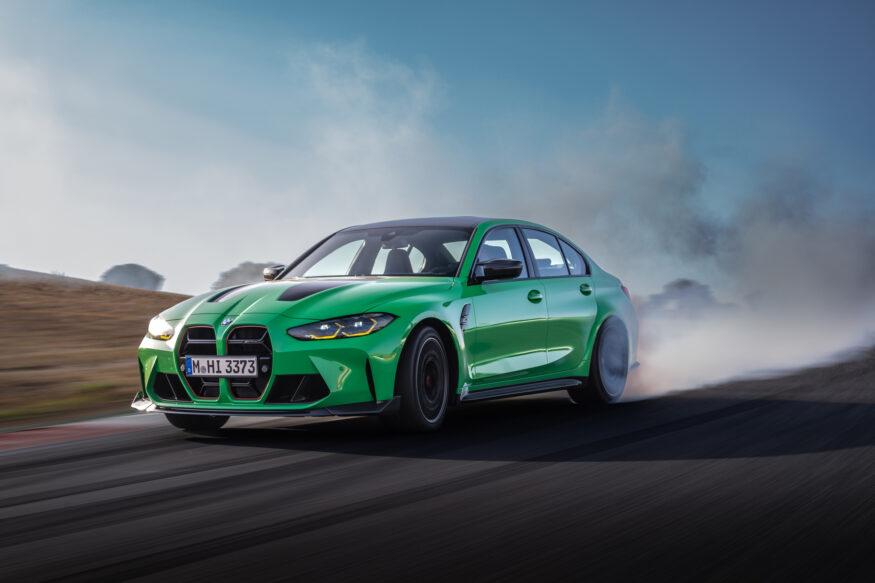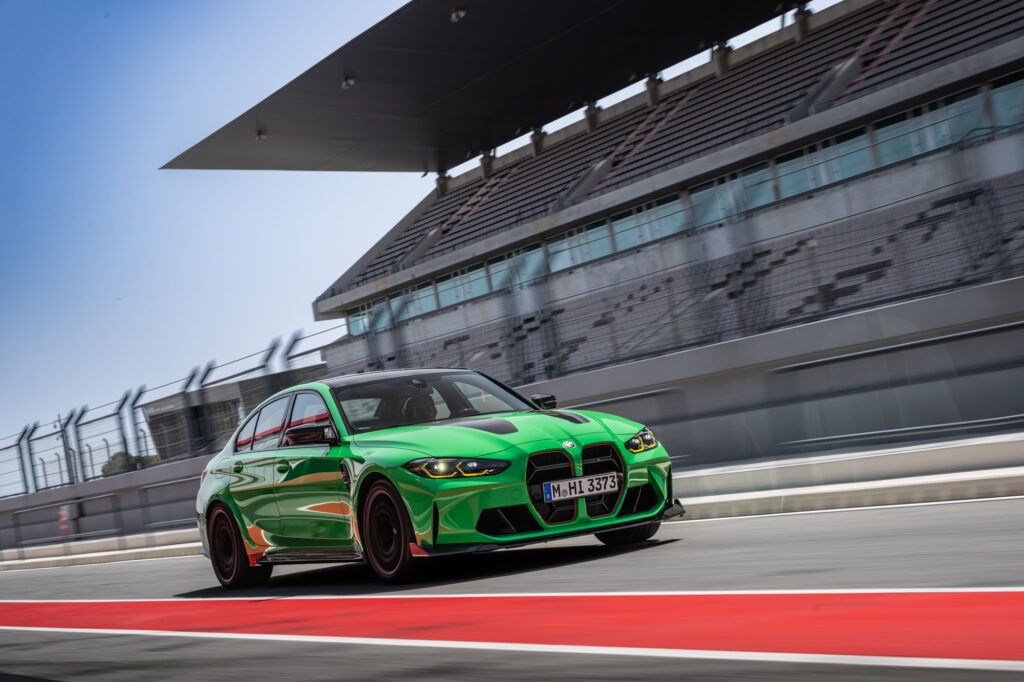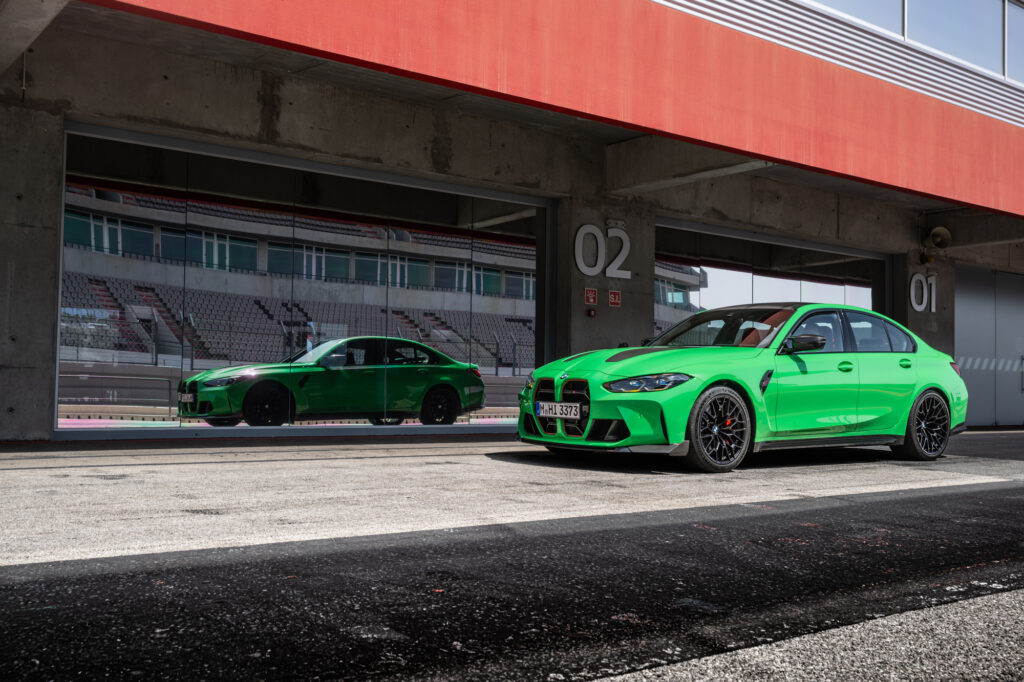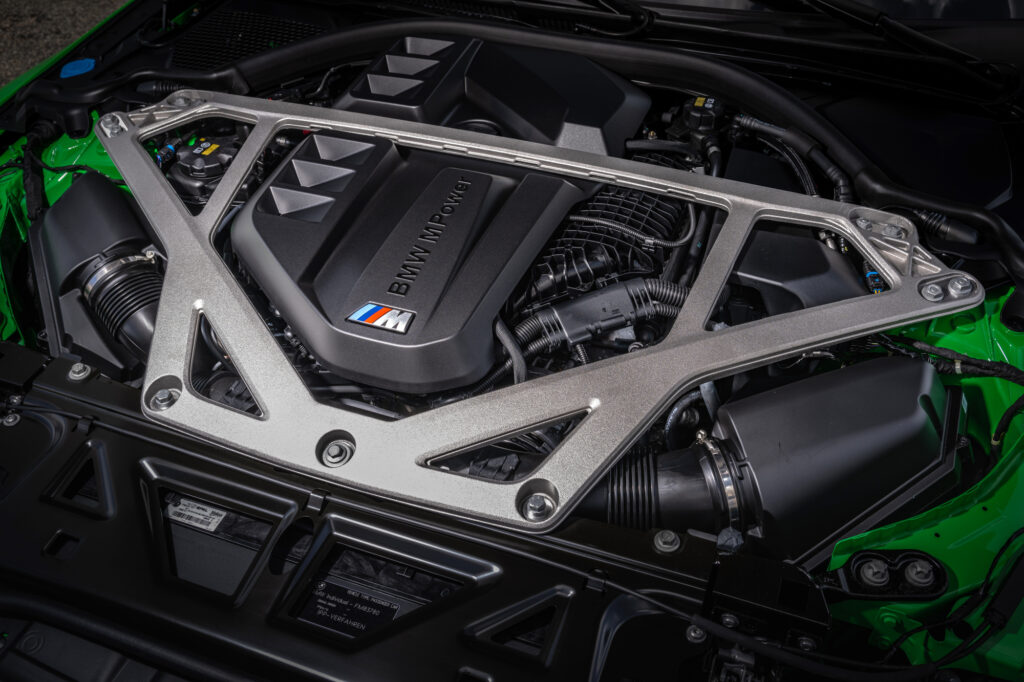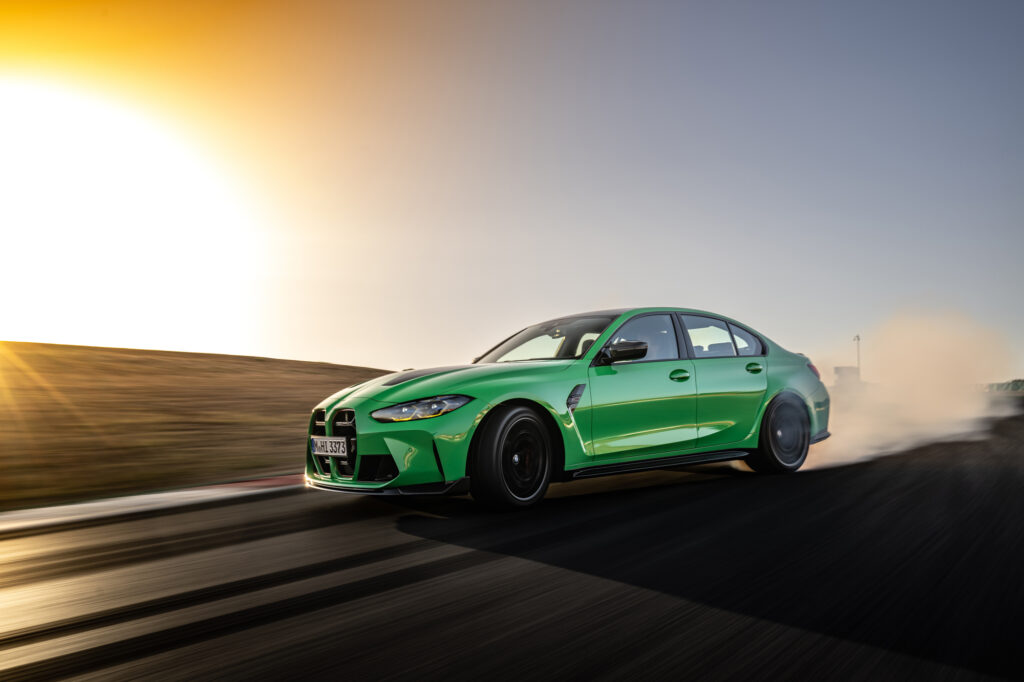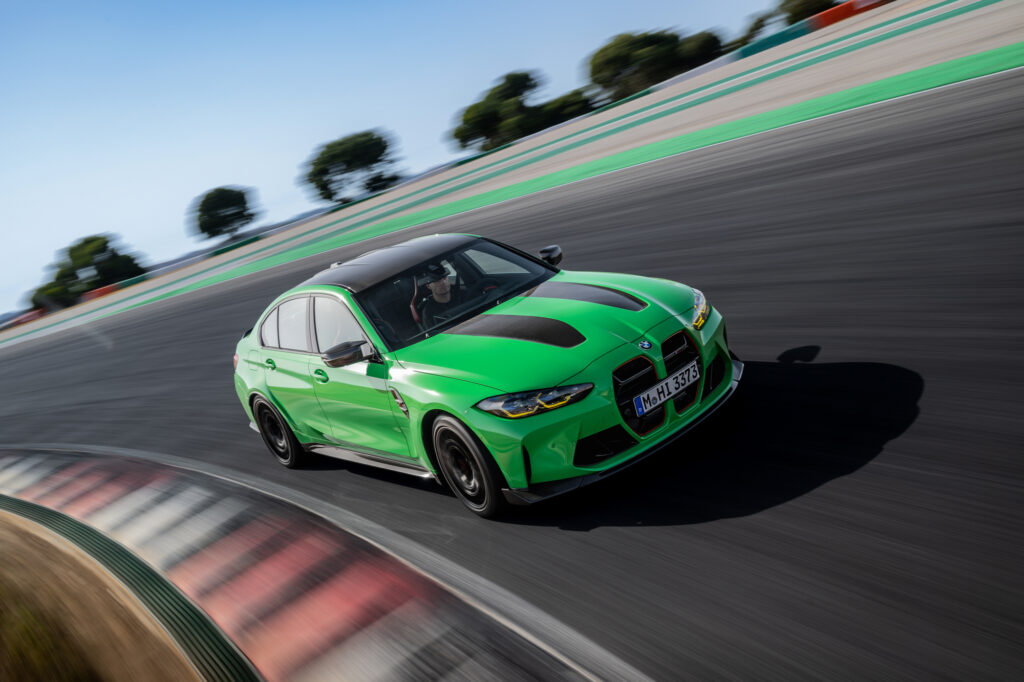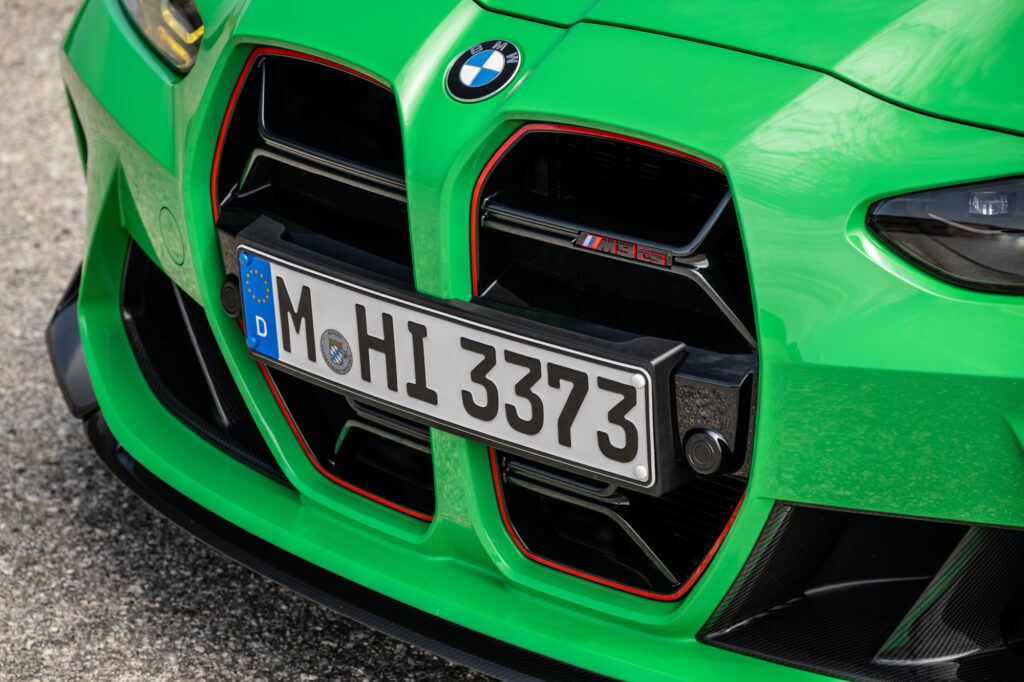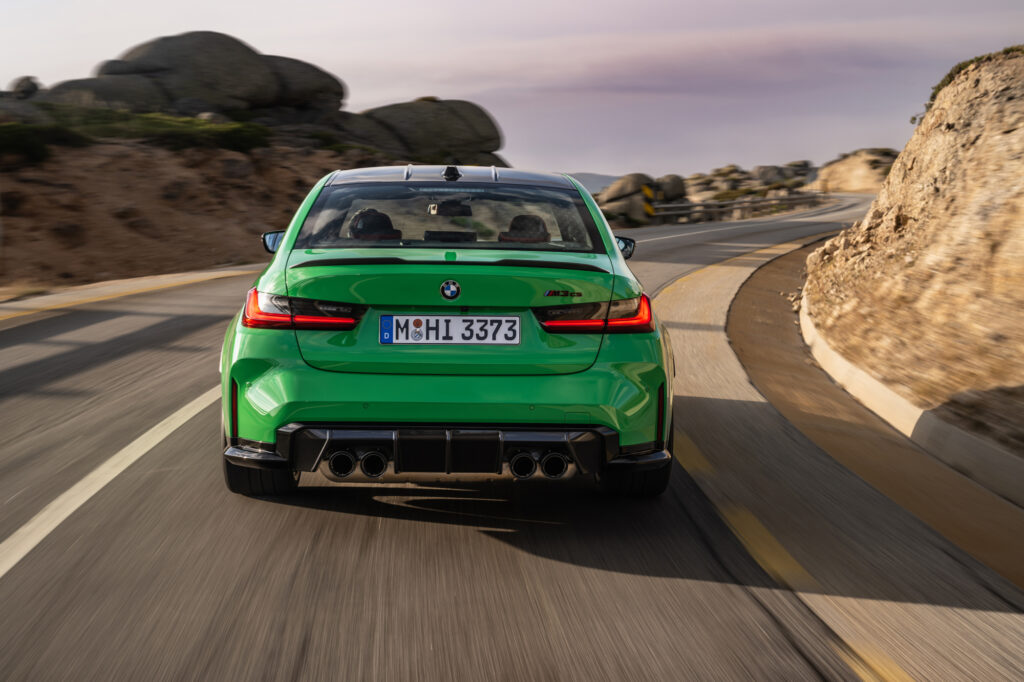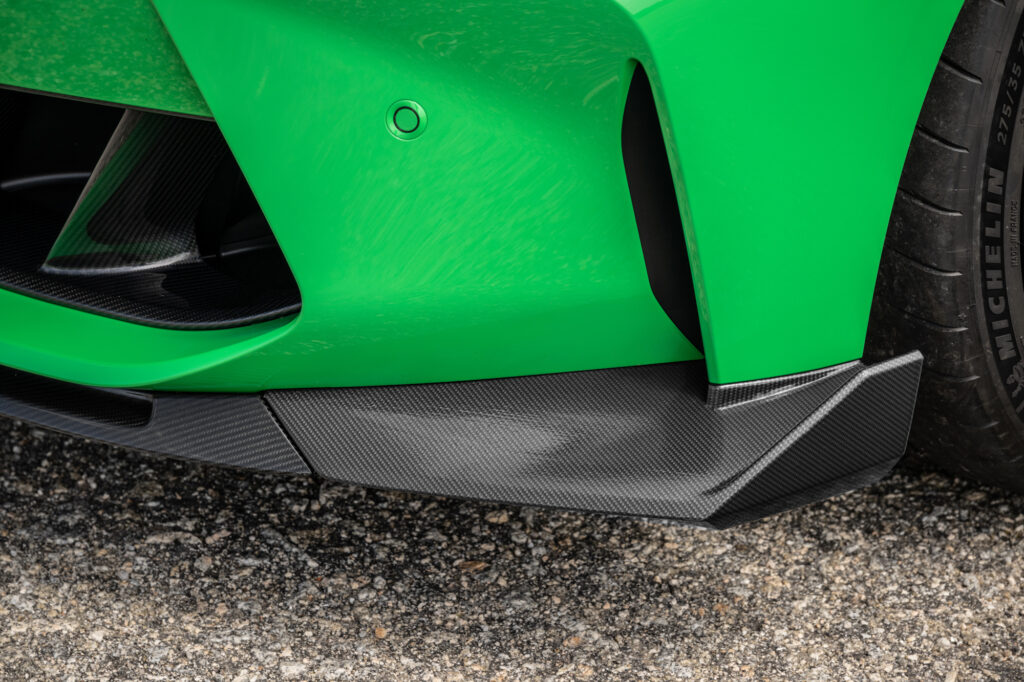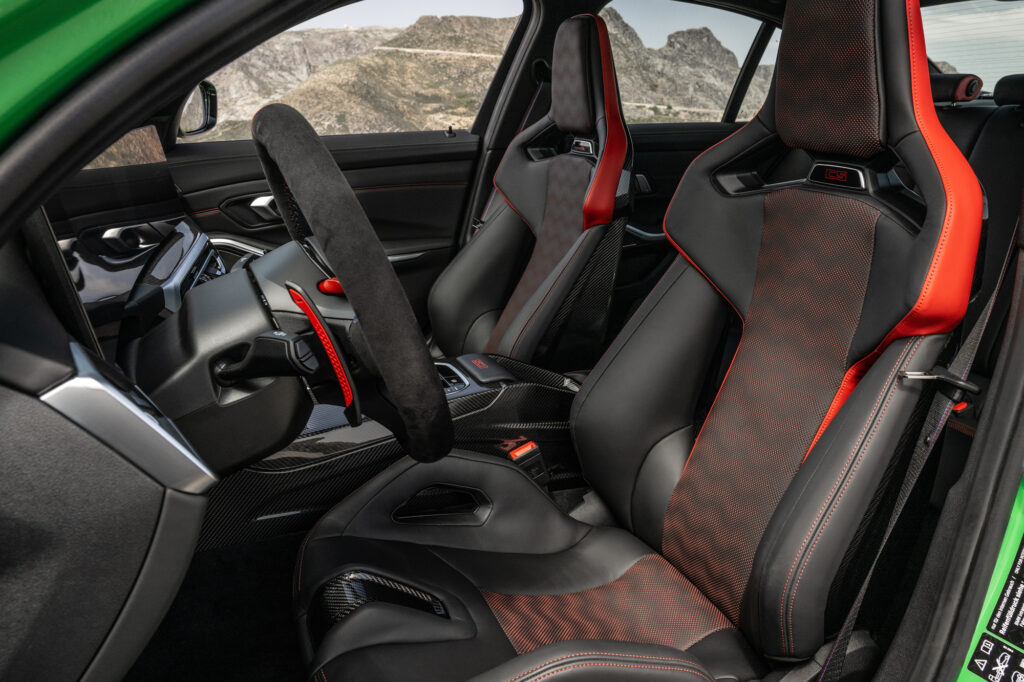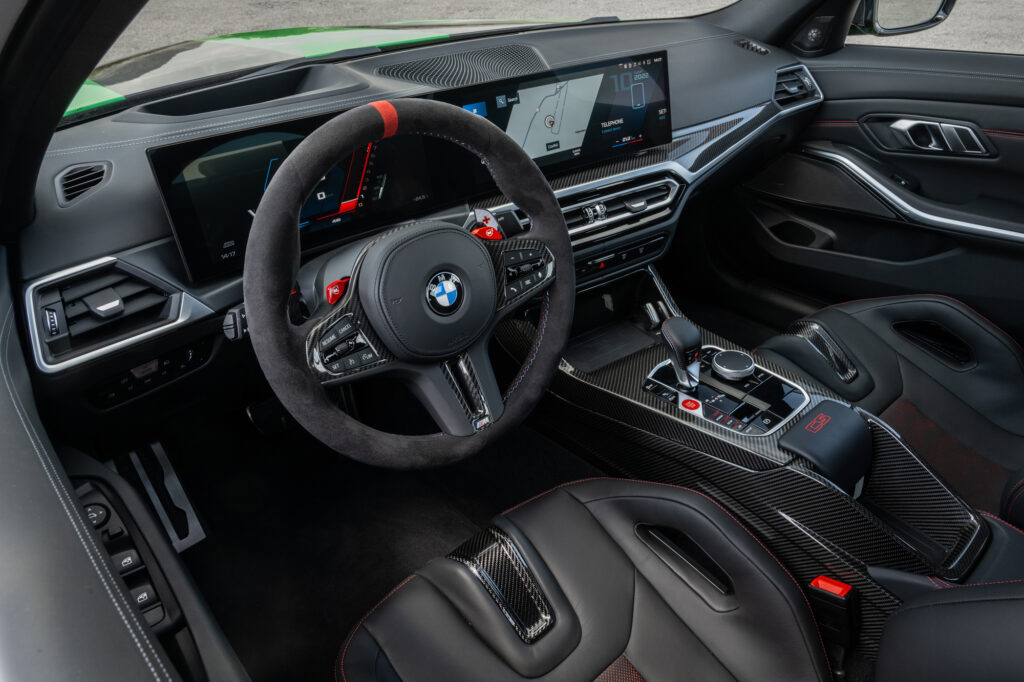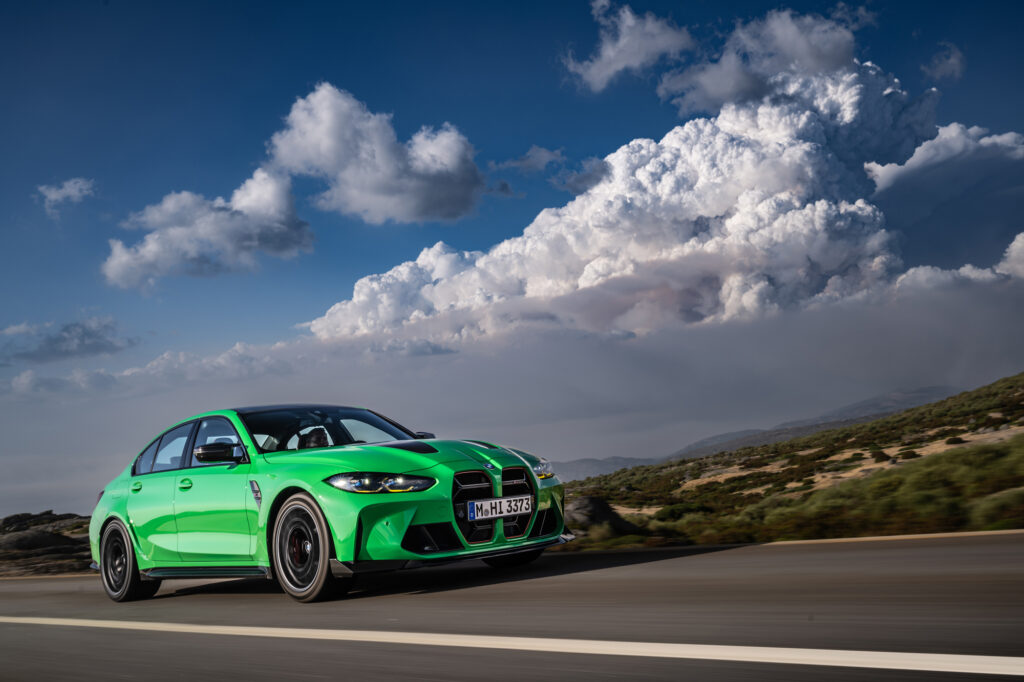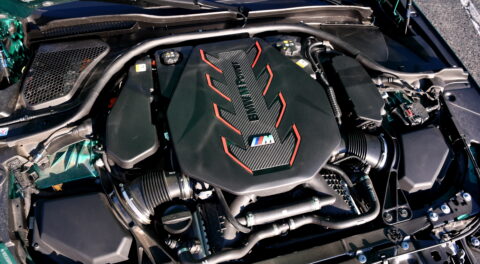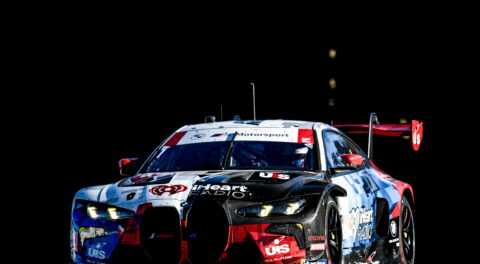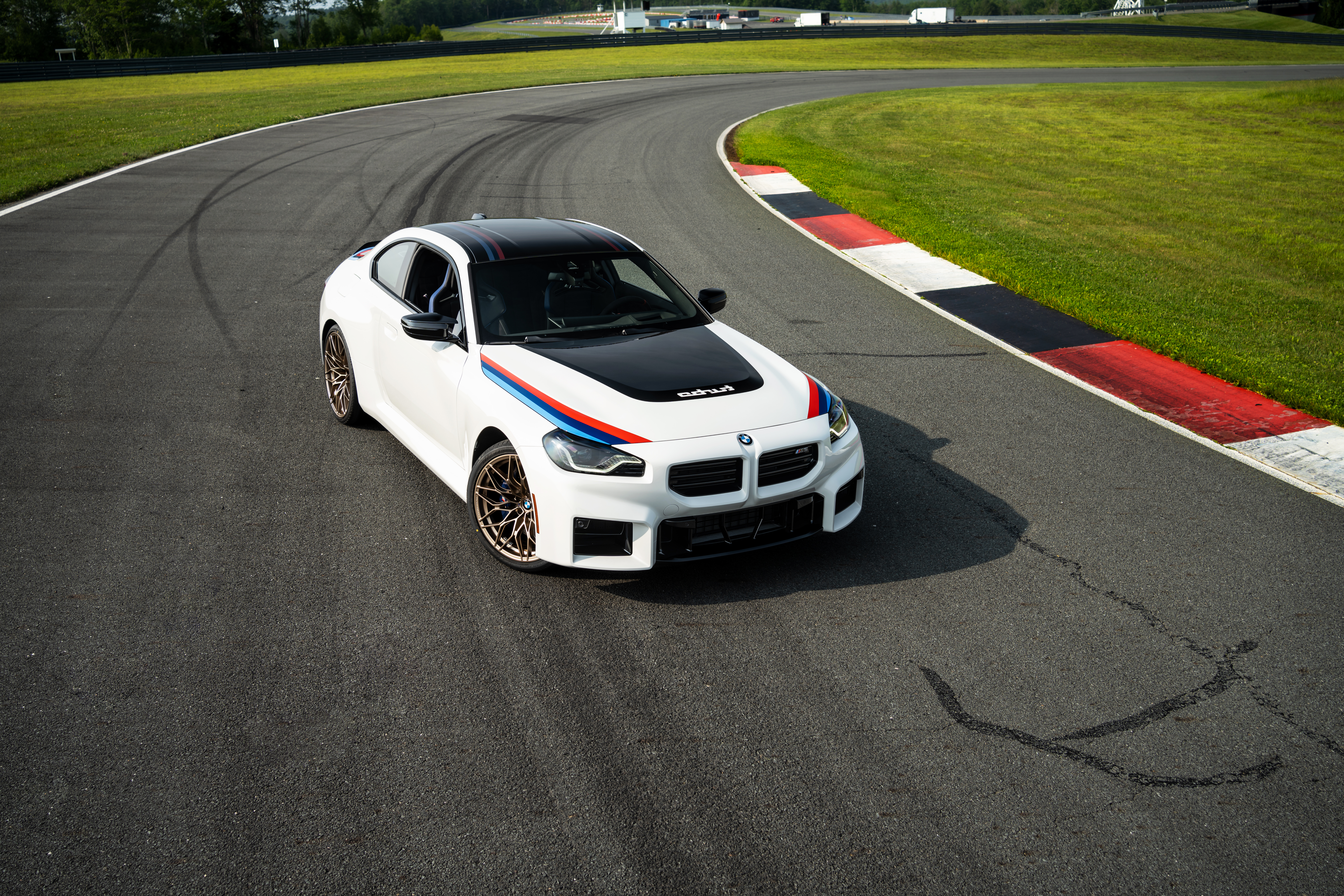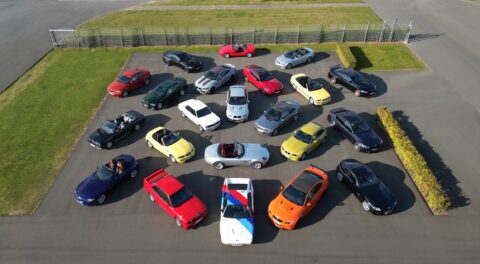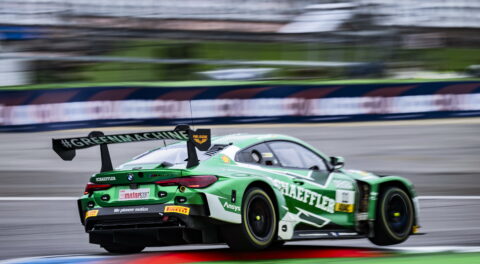BMW has just dropped the details for the 2024 M3 Competition Sport (CS), and they’ve teased us with the words “lighter, faster, stronger.” For enthusiasts, these words are certainly attention-grabbers. Regardless of whether I’m battling for my sanity in rush-hour traffic or for tenths of a second off my lap times, a car that is lighter, faster, and stronger sounds much better than one that is heavier, slower, and weaker. Excellent job, BMW marketing department!
How will BMW make good on this trio of promises? Well, let’s first take a look at the engine. If you had a turbocharged three-liter six-cylinder S58 engine, how would you add easy horsepower? Yes, you’d up the boost, and that’s what BMW did, too. They’ve increased maximum boost pressure from 24.7 psi to 30.5, in addition to CS-specific engine-management changes over the standard M3. Perhaps I’ve been out of the boost game for too long, but I feel like we’re in diesel-pressure territory now—yowza, that’s a lot of boost! This yields a 40-horsepower increase (now 543 from 6,250 to the 7,200-rpm redline) and 479 pound-feet of torque from 2,750 rpm to 5,950. The same three-liter unit is a building block for the engine that powers the BMW M4 GT3, so it can take the abuse. BMW explains, “Its crankcase has a sleeveless, closed-deck construction and is extremely rigid, making it suitable for very high combustion pressures. The forged lightweight crankshaft aids power build-up with its high torsional resistance and allows for high revs. The cylinder head has a 3D-printed core, allowing the coolant ducts to be routed in an optimum arrangement for temperature management. The oil-supply system is designed to handle the specific challenges of track use, as is the cooling system.” The impressive power numbers translate to a 3.2-second run to 60 mph and a 188-mph top speed, so they’ve made good on their promise of “faster.” Of course, the eight-speed M Steptronic transmission, M xDrive, and Active M differential do wonders to help the M3’s acceleration numbers.Yes, it’s all-wheel drive. BMW states, “The M xDrive all-wheel-drive system… uses an electronically controlled multi-plate clutch in the transfer case to ensure smooth and fully variable distribution of power between the front and rear axles.” The CS’s driver-configuration menu allows the driver to switch from the default all-wheel-drive setting to a Sport mode, which “directs even more of the engine’s torque to the rear wheels.” I just can imagine the tires roasting in a full all-wheel-drive drift during the intro to Top Gear as I’m typing this.
The new M3 CS comes with a plethora of other CS-specific hardware. BMW lists the “specially tuned axle kinematics and unique wheel camber settings, dampers, and anti-roll bars.” The electronically controlled dampers have their own M3 CS part numbers, as does the electromechanical M Servotronic steering system (with variable ratio).M Carbon ceramic brakes are standard as are the forged M light-alloy “double-staggered” wheels, measuring nineteen inches at the front and twenty at the rear. At no extra cost, buyers can opt for Michelin Pilot Sport Cup 2 tires, measuring 275/35-19 at the front and 285/30-20 at the rear.
And what about the M3 CS being “lighter”? Well, it’s about 75 pounds lighter than a standard M3 with M xDrive. BMW accomplishes this by using carbon-fiber-reinforced plastic (CFRP) throughout the interior and exterior. BMW explains, “Besides its carbon-fiber roof, the M3 CS also uses this lightweight, high-tech material for the hood, front splitter, front air intakes, exterior mirror caps, rear diffuser, and rear spoiler. The center console, shift paddles, and interior trim strips are also made from CFRP. The standard M Carbon bucket seats also reduce weight. Additionally, the titanium rear silencer shaves more than eight pounds off the weight of the exhaust system.”
It is, in fact, lighter, faster, and stronger. And it’s also exclusive; there are a number of interior and exterior features special to the M3 CS. The interior has “CS” badging on the areas you’d expect: door sills, center console, and seat backs. And speaking of seats, the M Carbon seats are another area benefitting from the use of CFRP. They are upholstered in Merino leather with Mugello red accents, giving them their own surfaces and stitch patterns. The 2024 M3 CS comes with plenty of driver-configurable electronic wizardry, like the M Drift Analyzer, M Laptimer, and M Traction Control, which can all be managed through the full-dash curved display. BMW Individual Frozen Solid White metallic paint is a CS-only option, with Brooklyn Grey Metallic, Black Sapphire Metallic, and BMW Individual Signal Green also being available paint choices. There are a number of exposed carbon-fiber surfaces such as the roof, depressions in the hood, and aero bits like splitters, spoilers, and side skirts.Based on the press photos, I’d say that the 2024 M3 CS is one mean-looking Signal Green machine. If BMW M continues the trend of lighter, faster, and stronger, they’ll have one happy customer base.—Mike Bevels
[Photos courtesy of BMW.]

